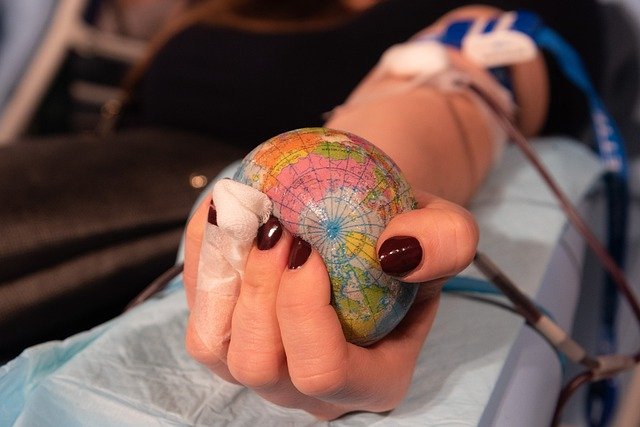Understand The Causes Of Blood Clot In Legs & Its Impact On Your Health
Blood clots in the legs, medically known as deep vein thrombosis (DVT), occur when blood thickens and clumps together in the deep veins of the legs. This condition affects approximately 900,000 Americans each year and demands attention due to its potentially serious health implications. Understanding the causes, recognizing the signs, and knowing the health impacts of blood clots in legs can help with early identification and appropriate action.

Causes of Blood Clot In Legs
Blood clots in the legs can develop due to various factors that affect blood flow and circulation. One primary cause is prolonged immobility, which commonly occurs during long-distance travel, extended bed rest after surgery, or sedentary lifestyles. When movement is limited, blood flow slows down, increasing the likelihood of clotting.
Certain medical conditions also elevate the risk of developing blood clots. These include heart failure, inflammatory bowel disease, cancer, and inherited blood clotting disorders. Additionally, individuals who have undergone recent surgery, especially operations involving the hips, knees, or pelvis, face heightened risks of developing clots as the body heals.
Age is another significant factor, with people over 60 experiencing a higher incidence of blood clots. Other risk factors include obesity, smoking, pregnancy, hormone therapy, and having a family history of blood clots. The combination of multiple risk factors substantially increases the likelihood of developing this condition.
Signs of Blood Clots in Legs
Recognizing the signs of a blood clot in the legs is crucial for prompt intervention. The most common symptom is swelling in one leg, particularly if it appears suddenly and without apparent injury. This swelling occurs because the clot blocks blood flow, causing fluid buildup in the affected area.
Pain is another key indicator, often described as a cramping or soreness that typically begins in the calf. The discomfort may worsen when standing or walking. Many individuals also report warmth in the affected area – the skin around the clot might feel warmer than surrounding areas when touched.
Visual changes can also signal a blood clot, with the affected area sometimes appearing redder or having a more bluish tint than the rest of the leg. Some people experience visible surface veins in the affected leg. It’s important to note that in some cases, blood clots may cause no symptoms at all, making regular check-ups important for those with risk factors.
How To Recognize A Blood Clot In The Legs?
While symptoms provide important clues, distinguishing a blood clot from other leg conditions requires attention to specific patterns. The combination of symptoms often provides clearer indications than any single sign. For instance, experiencing unexplained swelling together with pain and skin discoloration in one leg suggests a higher likelihood of a blood clot.
Timing also matters when recognizing blood clots. Symptoms that develop suddenly, especially after periods of inactivity or following surgery, warrant particular attention. Additionally, symptoms that worsen over hours or days rather than improving suggest a potential clot rather than a muscle strain or cramp.
Another distinguishing factor is that blood clot symptoms typically don’t improve with rest or common home remedies like ice or heat. If leg pain and swelling persist despite these measures, professional evaluation becomes increasingly important. Any suspected blood clot requires immediate medical assessment, as early detection significantly improves outcomes.
Impact of Blood Clot In Legs on Your Health
Blood clots in the legs can have both immediate and long-term health impacts. The most serious immediate risk is pulmonary embolism, which occurs when a clot breaks free and travels to the lungs. This potentially life-threatening condition causes symptoms like sudden shortness of breath, chest pain, rapid heart rate, and coughing (sometimes with blood).
Beyond this acute risk, untreated blood clots can lead to post-thrombotic syndrome, a long-term condition affecting up to 50% of people with DVT. This syndrome causes chronic leg pain, persistent swelling, skin changes, and ulcers due to damaged valves in the veins. These symptoms can significantly impact mobility and quality of life.
Blood clots may also signal underlying health conditions that require attention. The presence of a clot sometimes leads to the diagnosis of previously undetected disorders like thrombophilia (increased clotting tendency) or even certain types of cancer. This makes proper evaluation and follow-up care essential.
What Could It Mean With Having a Blood Clot in the Legs
A diagnosis of a blood clot in the leg often requires lifestyle adjustments and ongoing health monitoring. Regular physical activity becomes especially important, as it helps promote healthy circulation and prevent future clots. Weight management also plays a crucial role in reducing risk factors.
For those diagnosed with a blood clot, travel routines may need modification, including frequent movement during long journeys and potentially wearing compression stockings. Staying well-hydrated also helps maintain proper blood viscosity and flow.
The psychological impact of experiencing a blood clot shouldn’t be overlooked. Many people develop anxiety about recurrence or complications. Understanding that most people recover completely with proper care can help manage these concerns, though regular follow-up with healthcare providers remains essential for monitoring.
This article is for informational purposes only and should not be considered medical advice. Please consult a qualified healthcare professional for personalized guidance and treatment.




